MAP News Issue #577 – July 29, 2023
The MAP News | |
FEATURED STORYA natural treasure under threat 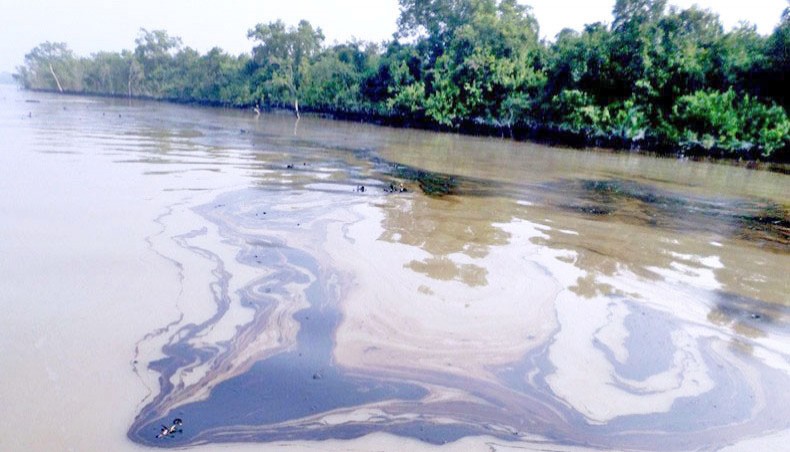 BANGLADESH – MANGROVES are one of Earth’s most unique and endangered natural habitats. Mangroves are unique and diverse ecosystems that grow in the intertidal zones of tropical and subtropical regions. They provide food, extreme weather protection and livelihoods for millions while harbouring incredible biodiversity, building coastal resilience and acting as immense carbon sinks. Therefore, mangrove conservation and restoration are powerful strategies to combat climate change. However, despite their importance, mangroves face severe threats and challenges from human activities and natural disasters. Deforestation, overexploitation, pollution and climate change are some factors that alarmingly degrade and destroy these forests. For example, Bangladesh has lost about 20 per cent of its mangrove area in the last 40 years due to shrimp farming, logging and land conversion. The mangrove ecosystem in Bangladesh, one of the world’s largest and most productive mangrove regions, urgently needs our attention and action. With coastal communities already facing the impacts of a changing climate, we need to turbocharge our investment in conserving and restoring mangroves as nature-based solutions to adapt to this changing planet. Today, on International Day for the Conservation of the Mangrove Ecosystem, let’s explore how we can save the mangroves in Bangladesh. BANGLADESH – MANGROVES are one of Earth’s most unique and endangered natural habitats. Mangroves are unique and diverse ecosystems that grow in the intertidal zones of tropical and subtropical regions. They provide food, extreme weather protection and livelihoods for millions while harbouring incredible biodiversity, building coastal resilience and acting as immense carbon sinks. Therefore, mangrove conservation and restoration are powerful strategies to combat climate change. However, despite their importance, mangroves face severe threats and challenges from human activities and natural disasters. Deforestation, overexploitation, pollution and climate change are some factors that alarmingly degrade and destroy these forests. For example, Bangladesh has lost about 20 per cent of its mangrove area in the last 40 years due to shrimp farming, logging and land conversion. The mangrove ecosystem in Bangladesh, one of the world’s largest and most productive mangrove regions, urgently needs our attention and action. With coastal communities already facing the impacts of a changing climate, we need to turbocharge our investment in conserving and restoring mangroves as nature-based solutions to adapt to this changing planet. Today, on International Day for the Conservation of the Mangrove Ecosystem, let’s explore how we can save the mangroves in Bangladesh. GLOBAL UNESCO – An Inside Look at the Beauty and Benefits of Mangroves  GLOBAL – Mangroves are among the most misunderstood ecosystems. The coastal forests are sometimes perceived as “dirty” or “dead areas”, wasted land that could be cleared in favour of sandy beaches or other developments. These myths about mangroves could not be farther from the truth. They are the only trees that thrive in salty waters and improve water quality by filtering out nutrients and sediments. They are also teeming with life: more than 1,500 plant and animal species depend on mangroves. This includes fish and birds who use the shallow waters beneath mangrove trees as nurseries. Research now indicates that mangroves are also critical for larger mammals, such as monkeys, sloths, tigers, hyenas and African wild dogs. But mangroves are threatened. Worldwide, a fifth of them have already disappeared. In some places around the world, such as the Irrawaddy Delta, over 80 per cent of mangrove forest has been lost since the 1970s! The main driver of mangrove loss is coastal development, when mangrove forests are cleared to make way for buildings and fish or shrimp farms. The plight of these vital ecosystems were in the spotlight on 26 July, World Mangrove Day. Mangrove Action Project is running its ninth annual Mangrove Photography Awards. The competition invites photographers of all levels around the world to contribute their images to celebrate the beauty and diversity of mangrove forests and inspire action to conserve them GLOBAL – Mangroves are among the most misunderstood ecosystems. The coastal forests are sometimes perceived as “dirty” or “dead areas”, wasted land that could be cleared in favour of sandy beaches or other developments. These myths about mangroves could not be farther from the truth. They are the only trees that thrive in salty waters and improve water quality by filtering out nutrients and sediments. They are also teeming with life: more than 1,500 plant and animal species depend on mangroves. This includes fish and birds who use the shallow waters beneath mangrove trees as nurseries. Research now indicates that mangroves are also critical for larger mammals, such as monkeys, sloths, tigers, hyenas and African wild dogs. But mangroves are threatened. Worldwide, a fifth of them have already disappeared. In some places around the world, such as the Irrawaddy Delta, over 80 per cent of mangrove forest has been lost since the 1970s! The main driver of mangrove loss is coastal development, when mangrove forests are cleared to make way for buildings and fish or shrimp farms. The plight of these vital ecosystems were in the spotlight on 26 July, World Mangrove Day. Mangrove Action Project is running its ninth annual Mangrove Photography Awards. The competition invites photographers of all levels around the world to contribute their images to celebrate the beauty and diversity of mangrove forests and inspire action to conserve them
AFRICA Mangrove cure for dire climate change effect AMERICAS Yucatan Mangrove Forests at Risk Due to Urban Territorial Disorder  MEXICO – Senator from Yucatan Raúl Paz issued an urgent call to protect the mangrove forests in Yucatán as a fundamental measure to preserve the environment and ensure sustainable development in the region. The legislator expressed concern about the serious threat faced by the mangrove forests in different areas of the state, resulting from improper urban development and real estate projects along the Yucatán Peninsula. On the occasion of the International Day for the Protection of the Mangrove Ecosystem, he urged society to get involved and demand from the authorities their protection and conservation efforts. Paz Alonzo highlighted the importance of mangrove forests as regulators of water quality along the coasts, as well as providers of fishing zones, habitats for various plant and animal species, and essential for food security in the region. Furthermore, he emphasized their crucial role in mitigating the effects of climate change in places like Yucatán, an area exposed to hurricanes. According to official data, Mexico possesses 5 percent of the world’s total mangrove forests, ranking the country in 4th place among 125 countries and territories with this type of wetland. However, it is estimated that thousands of hectares of this ecosystem have been lost in the country in recent years. MEXICO – Senator from Yucatan Raúl Paz issued an urgent call to protect the mangrove forests in Yucatán as a fundamental measure to preserve the environment and ensure sustainable development in the region. The legislator expressed concern about the serious threat faced by the mangrove forests in different areas of the state, resulting from improper urban development and real estate projects along the Yucatán Peninsula. On the occasion of the International Day for the Protection of the Mangrove Ecosystem, he urged society to get involved and demand from the authorities their protection and conservation efforts. Paz Alonzo highlighted the importance of mangrove forests as regulators of water quality along the coasts, as well as providers of fishing zones, habitats for various plant and animal species, and essential for food security in the region. Furthermore, he emphasized their crucial role in mitigating the effects of climate change in places like Yucatán, an area exposed to hurricanes. According to official data, Mexico possesses 5 percent of the world’s total mangrove forests, ranking the country in 4th place among 125 countries and territories with this type of wetland. However, it is estimated that thousands of hectares of this ecosystem have been lost in the country in recent years. Brazilian landfill restored to mangrove 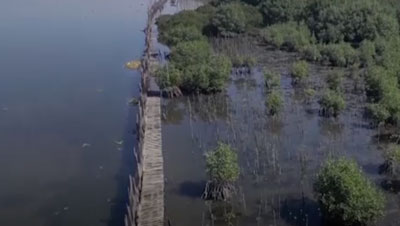 BRAZIL – A landfill in the Guanabara Bay of Rio de Janeiro, Brazil, has been restored to mangroves, a boost for the area’s flora and fauna. The 600,000 square metres recovered was part of one of the largest landfills in Latin America. From the early 1970s to 2012, the dump in the Jardim Gramacho neighbourhood received around 80 million tonnes of trash, polluting the land and the waters of the Guanabara Bay. The landfill was deactivated 11 years ago and, through an environmental project led by Rio’s Municipal Cleaning Company and a private company, the area has been replaced by greenery. The project began by planting 10 hectares of mangrove plants and now has 60 hectares. It is the largest mangrove area of the bay. Mangrove plants are the most suitable for use in environmental restoration, due to their impressive ability to store so-called “blue carbon”, a term used to refer to the carbon of marine and coastal ecosystems, in contrast to the “green carbon” associated with forest and other terrestrial ecosystems. According to estimates from a study published in early 2022, one hectare of mangrove can store between two and four times more carbon than the same hectare of another biome – including the Amazon rainforest. BRAZIL – A landfill in the Guanabara Bay of Rio de Janeiro, Brazil, has been restored to mangroves, a boost for the area’s flora and fauna. The 600,000 square metres recovered was part of one of the largest landfills in Latin America. From the early 1970s to 2012, the dump in the Jardim Gramacho neighbourhood received around 80 million tonnes of trash, polluting the land and the waters of the Guanabara Bay. The landfill was deactivated 11 years ago and, through an environmental project led by Rio’s Municipal Cleaning Company and a private company, the area has been replaced by greenery. The project began by planting 10 hectares of mangrove plants and now has 60 hectares. It is the largest mangrove area of the bay. Mangrove plants are the most suitable for use in environmental restoration, due to their impressive ability to store so-called “blue carbon”, a term used to refer to the carbon of marine and coastal ecosystems, in contrast to the “green carbon” associated with forest and other terrestrial ecosystems. According to estimates from a study published in early 2022, one hectare of mangrove can store between two and four times more carbon than the same hectare of another biome – including the Amazon rainforest.
ASIA High-level international forum on mangrove conservation concludes in China 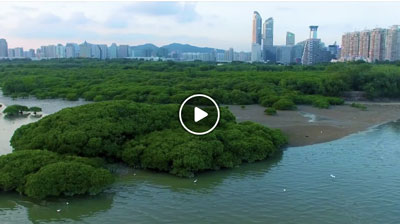 CHINA – A high-level international forum on mangrove conservation concluded on Thursday in Shenzhen City, south China’s Guangdong Province. The two-day forum aimed to galvanize global consensus and efforts for mangrove protection. 160 representatives from 29 countries, the secretariat of the Ramsar Convention on Wetlands and relevant international organizations such as the Food and Agriculture Organization of the United Nations participated in the forum. A joint statement was adopted on Wednesday morning, which encourages governments to incorporate the protection and sustainable use of mangroves into national plans to achieve strong ecological, economic and social benefits. Yang Qiong, Senior engineer of Guangdong Neilingding Futian National Nature Reserve Administration Bureau said “we hope that through such international exchanges and cooperation, we can share our conservation and management experience with them, especially some cases of harmonious coexistence between man and nature, city and wetlands in such a megacity.” Thanks to China’s dedication to ecological protection and restoration, the country’s mangrove forest coverage has reached about 29,200 hectares, an increase of some 7,200 hectares from the beginning of the century. CHINA – A high-level international forum on mangrove conservation concluded on Thursday in Shenzhen City, south China’s Guangdong Province. The two-day forum aimed to galvanize global consensus and efforts for mangrove protection. 160 representatives from 29 countries, the secretariat of the Ramsar Convention on Wetlands and relevant international organizations such as the Food and Agriculture Organization of the United Nations participated in the forum. A joint statement was adopted on Wednesday morning, which encourages governments to incorporate the protection and sustainable use of mangroves into national plans to achieve strong ecological, economic and social benefits. Yang Qiong, Senior engineer of Guangdong Neilingding Futian National Nature Reserve Administration Bureau said “we hope that through such international exchanges and cooperation, we can share our conservation and management experience with them, especially some cases of harmonious coexistence between man and nature, city and wetlands in such a megacity.” Thanks to China’s dedication to ecological protection and restoration, the country’s mangrove forest coverage has reached about 29,200 hectares, an increase of some 7,200 hectares from the beginning of the century.Villagers donate land for mangrove plantation in Odisha  INDIA – People in the coastal part of Odisha’s Kendrapara district are to donate land for a mangrove plantation. Mangroves act as bio-shields against sea surge and cyclones. Odisha has 259 square kilometres of mangroves while Kendrapara is home to over 80% of the State’s mangrove forest. According to the Forest Survey of India-2021, Odisha has achieved growth of 8 sq km in mangrove forest area, the highest growth in the country. Over the years, the mangrove forests have been denuded by destructive shrimp culture along the coast. Mangrove forests were cleared for shrimp culture. “The department had called on people to take up plantation of mangroves on private land so that the entire coast is covered in mangrove vegetation. We have received an encouraging response. As of now 10 to 15 hectares of land have been donated by private individuals,” according to Sudharshan G. Yadav, Divisional Forest Officer of Rajnagar Wildlife Division. Mr. Yadav said about 25 people had donated their land. “We have been raising awareness on the importance of mangrove forests on the coast. People too have realized the utility and started working with the department,” said the DFO. Bijay Kabi, an environmentalist, said, “over the past 15 years, we have managed to impress upon residents of two villages to convert common land into mangroves. The result has been very encouraging. Due to the growth of mangrove forests, the grassland has also grown providing fodder to cows.” INDIA – People in the coastal part of Odisha’s Kendrapara district are to donate land for a mangrove plantation. Mangroves act as bio-shields against sea surge and cyclones. Odisha has 259 square kilometres of mangroves while Kendrapara is home to over 80% of the State’s mangrove forest. According to the Forest Survey of India-2021, Odisha has achieved growth of 8 sq km in mangrove forest area, the highest growth in the country. Over the years, the mangrove forests have been denuded by destructive shrimp culture along the coast. Mangrove forests were cleared for shrimp culture. “The department had called on people to take up plantation of mangroves on private land so that the entire coast is covered in mangrove vegetation. We have received an encouraging response. As of now 10 to 15 hectares of land have been donated by private individuals,” according to Sudharshan G. Yadav, Divisional Forest Officer of Rajnagar Wildlife Division. Mr. Yadav said about 25 people had donated their land. “We have been raising awareness on the importance of mangrove forests on the coast. People too have realized the utility and started working with the department,” said the DFO. Bijay Kabi, an environmentalist, said, “over the past 15 years, we have managed to impress upon residents of two villages to convert common land into mangroves. The result has been very encouraging. Due to the growth of mangrove forests, the grassland has also grown providing fodder to cows.”From Natural Barrier To Habitat For Marine Life, Mangroves Play Several Roles, But We Are Failing To Protect Them 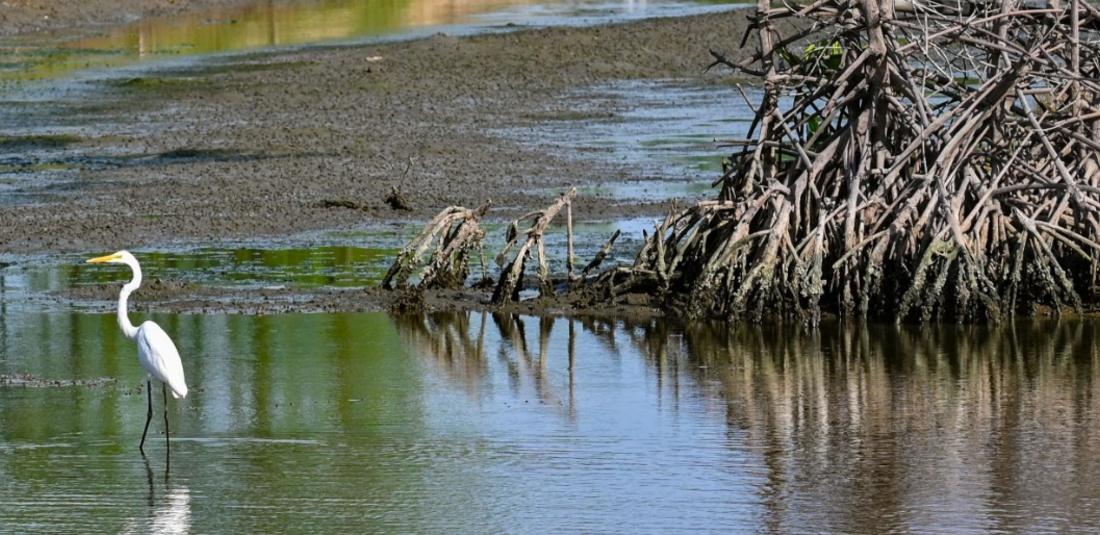 INDIA – Despite the enormous benefits they have to offer, mangroves across the world are facing an ever-increasing existential threat. The biggest risks mangroves face are coastal development, shrimp aquaculture, charcoal farming, and natural disasters. According to the India State of Forest Report 2021, the very dense mangrove cover in the Sunderbans has shrunk by two square kilometres – from 996 sq km to 994 sq km – between 2019 and 2021. The delta had a mangrove cover of 999 sq km in 2017, which had declined by three square kilometres in 2019. And it was 1038 sq km in 2011. In Maharashtra, especially in Mumbai, the loss of Mangroves has been concerning. In 2018, the Bombay High Court said that the destruction of Mangroves offended the fundamental rights of the citizens, and hence it was a mandatory duty of the state and its agencies to protect and preserve the mangroves. In 2005 in its interim orders in the matter, the HC had ordered a ban on hacking or construction on mangrove land and dumping of debris and garbage on such mangrove plots. INDIA – Despite the enormous benefits they have to offer, mangroves across the world are facing an ever-increasing existential threat. The biggest risks mangroves face are coastal development, shrimp aquaculture, charcoal farming, and natural disasters. According to the India State of Forest Report 2021, the very dense mangrove cover in the Sunderbans has shrunk by two square kilometres – from 996 sq km to 994 sq km – between 2019 and 2021. The delta had a mangrove cover of 999 sq km in 2017, which had declined by three square kilometres in 2019. And it was 1038 sq km in 2011. In Maharashtra, especially in Mumbai, the loss of Mangroves has been concerning. In 2018, the Bombay High Court said that the destruction of Mangroves offended the fundamental rights of the citizens, and hence it was a mandatory duty of the state and its agencies to protect and preserve the mangroves. In 2005 in its interim orders in the matter, the HC had ordered a ban on hacking or construction on mangrove land and dumping of debris and garbage on such mangrove plots. Pease consider donating to MAP to keep it going. *Articles in this newsletter may mention practices being used and/or show exagerated results being claimed without proof. Stories are presented here in effort to show mangrove related activity around the world and do not necessarily reflect Mangrove Action Project’s views or mangrove restoration best-practices. NOTICE
ACTION ALERTSEcuador: Stop land grabbing and racial discrimination for palm oil! SIGN THE PETITIONUGANDA Stop criminalizing pipeline protesters! SIGN THE PETITIONSave Endangered Species From SpaceX | |
Mangrove Action Project Click here to view past newsletters
| |

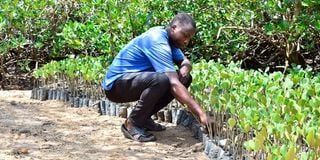 MOMBASA – It is World Mangrove Day today, the annual review of conservation of the high-value but threatened tree species. Mangrove is a ecosystem heavyweight, owing to its notable contribution to environmental conservation and the improvement of livelihoods among marine communities. Mangrove forests account for 0.4 per cent of the global forest cover. For decades, they have been a source of livelihood for coastal residents. But every year, one per cent of mangroves are lost, mostly to human practices like overfishing, land use changes, coastal development and agriculture. UNEP blames a quarter of the loss on farming on the coastline. Since 1985, Kenya has suffered a 70 per cent decline of mangrove in the coastal region, mostly due to overharvesting of their resources to meet increasing human needs, hence the increased vulnerability of residents to effects of climate change. Besides their incredible adaptation to an environment considered unfit for trees, mangrove forests are critical for protecting coastlines, endangered and threatened species and people’s livelihoods and even helping to combat climate change effects. Mangrove forests are a direct essential connection between life in the ocean and on land. Millions in the tropics and subtropics depend on them for wood, medicine, livestock feeds, honey and others.
MOMBASA – It is World Mangrove Day today, the annual review of conservation of the high-value but threatened tree species. Mangrove is a ecosystem heavyweight, owing to its notable contribution to environmental conservation and the improvement of livelihoods among marine communities. Mangrove forests account for 0.4 per cent of the global forest cover. For decades, they have been a source of livelihood for coastal residents. But every year, one per cent of mangroves are lost, mostly to human practices like overfishing, land use changes, coastal development and agriculture. UNEP blames a quarter of the loss on farming on the coastline. Since 1985, Kenya has suffered a 70 per cent decline of mangrove in the coastal region, mostly due to overharvesting of their resources to meet increasing human needs, hence the increased vulnerability of residents to effects of climate change. Besides their incredible adaptation to an environment considered unfit for trees, mangrove forests are critical for protecting coastlines, endangered and threatened species and people’s livelihoods and even helping to combat climate change effects. Mangrove forests are a direct essential connection between life in the ocean and on land. Millions in the tropics and subtropics depend on them for wood, medicine, livestock feeds, honey and others. 







